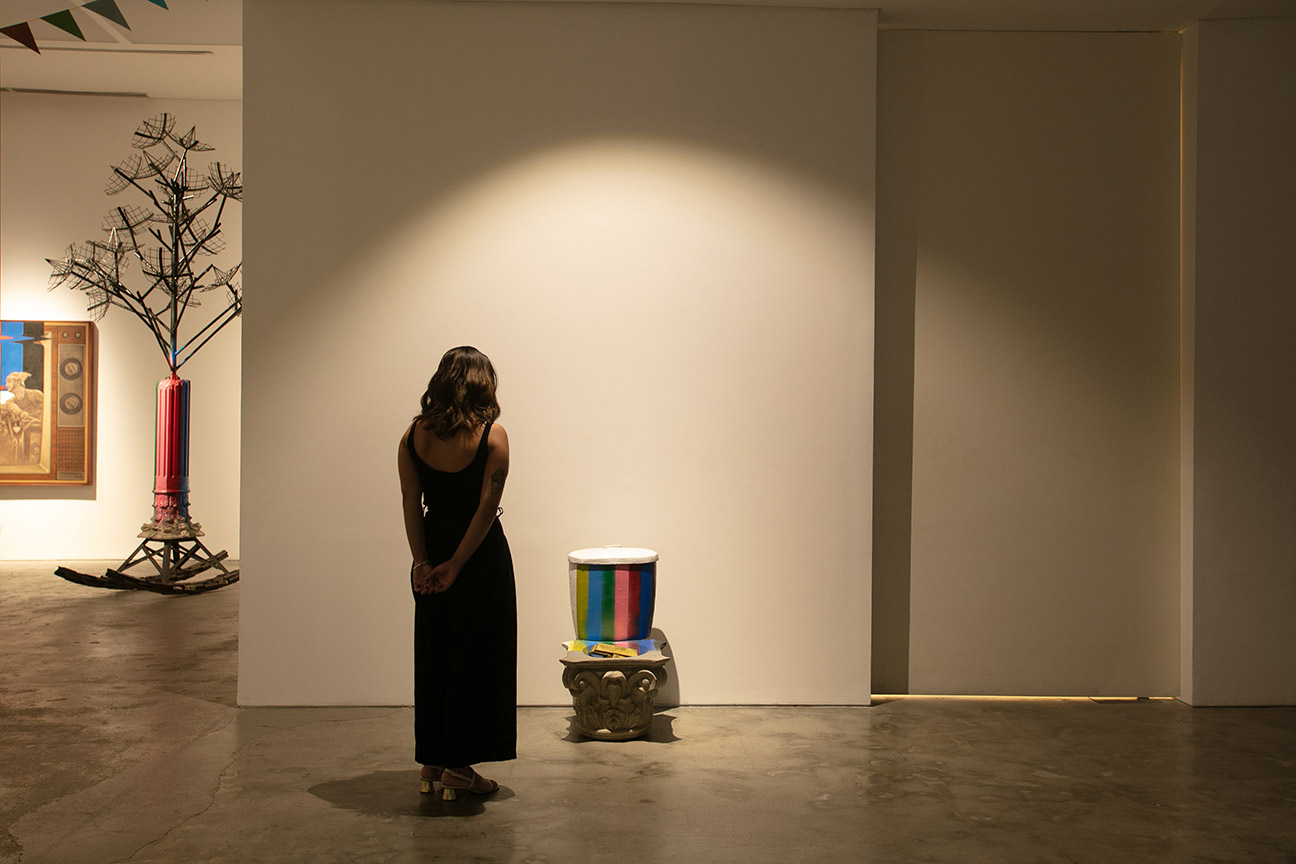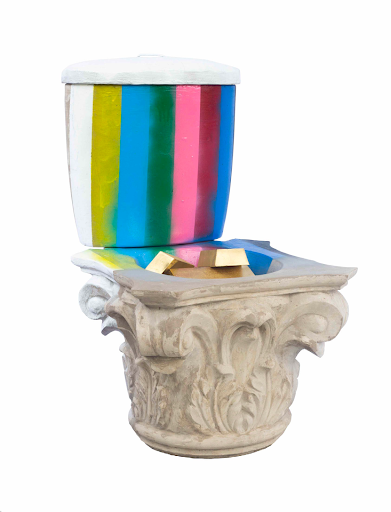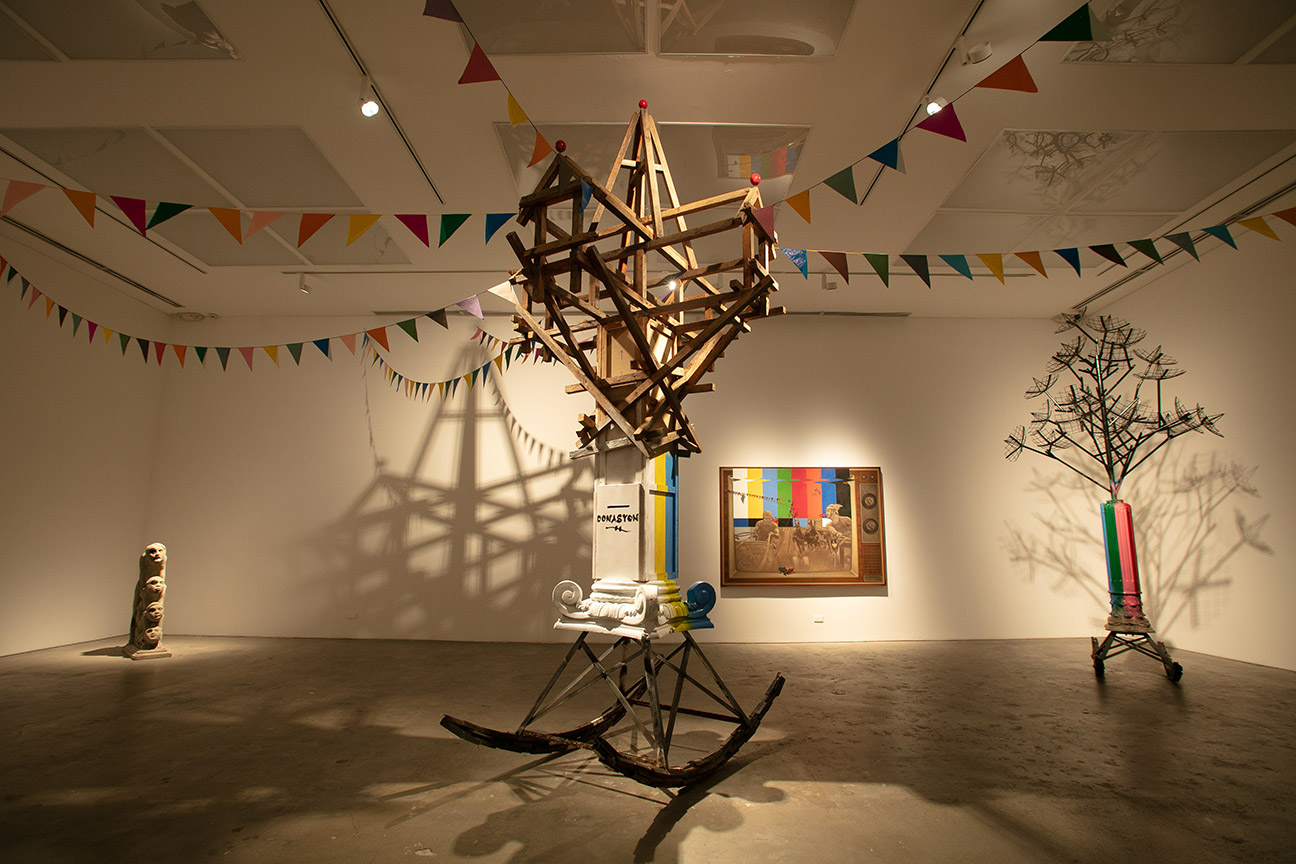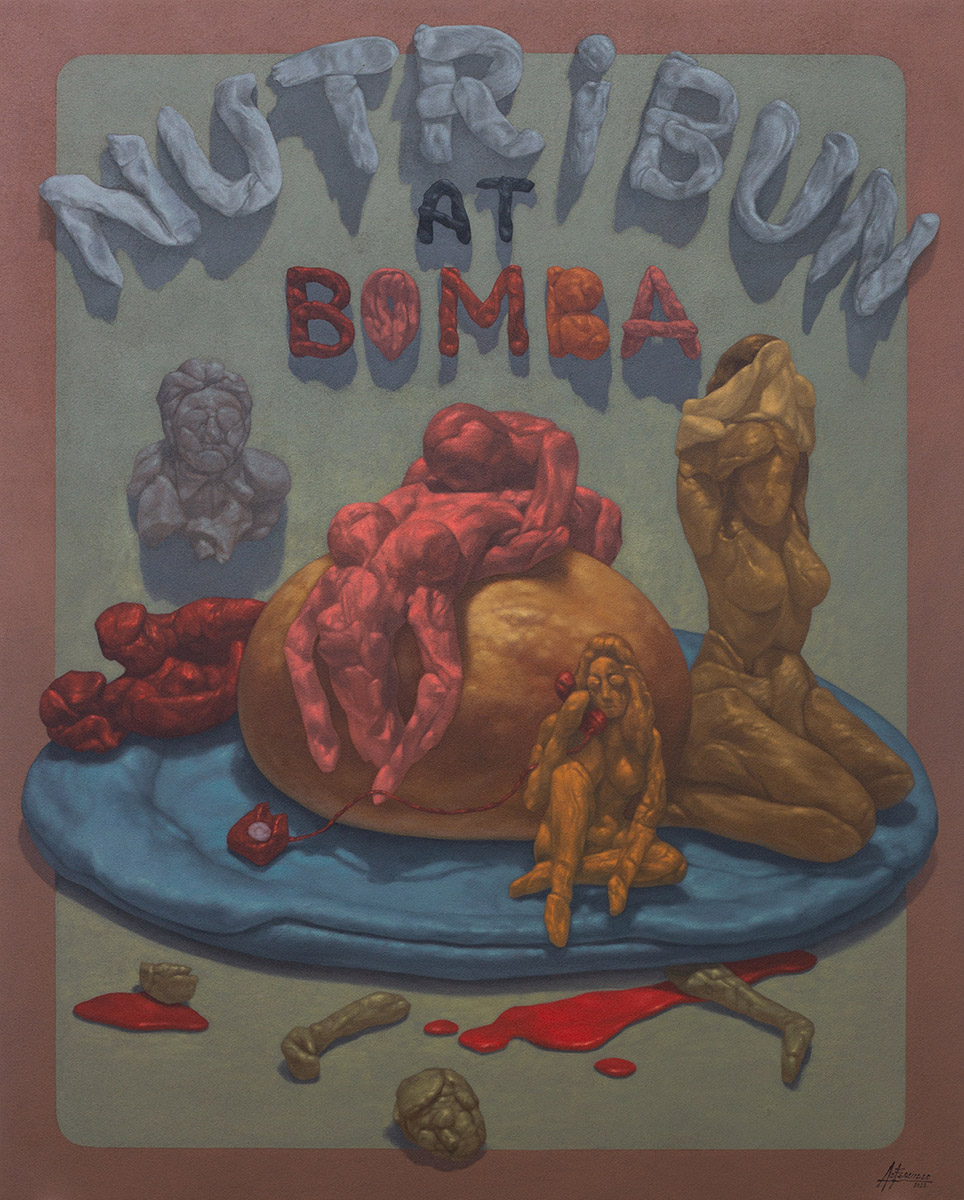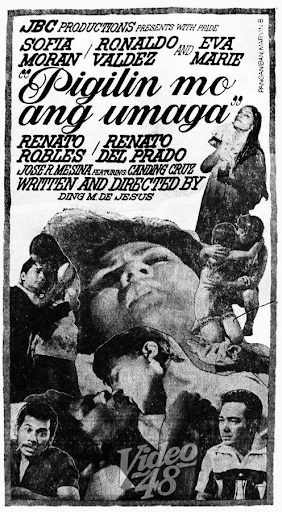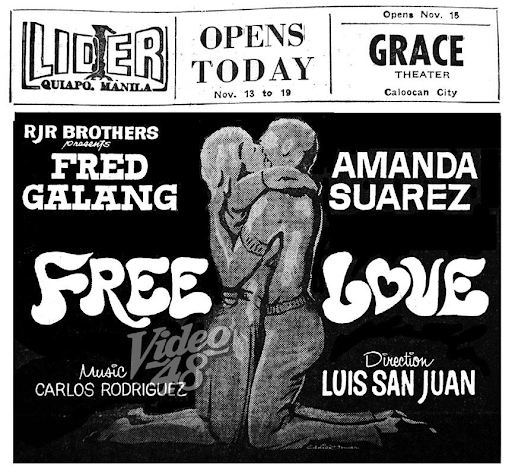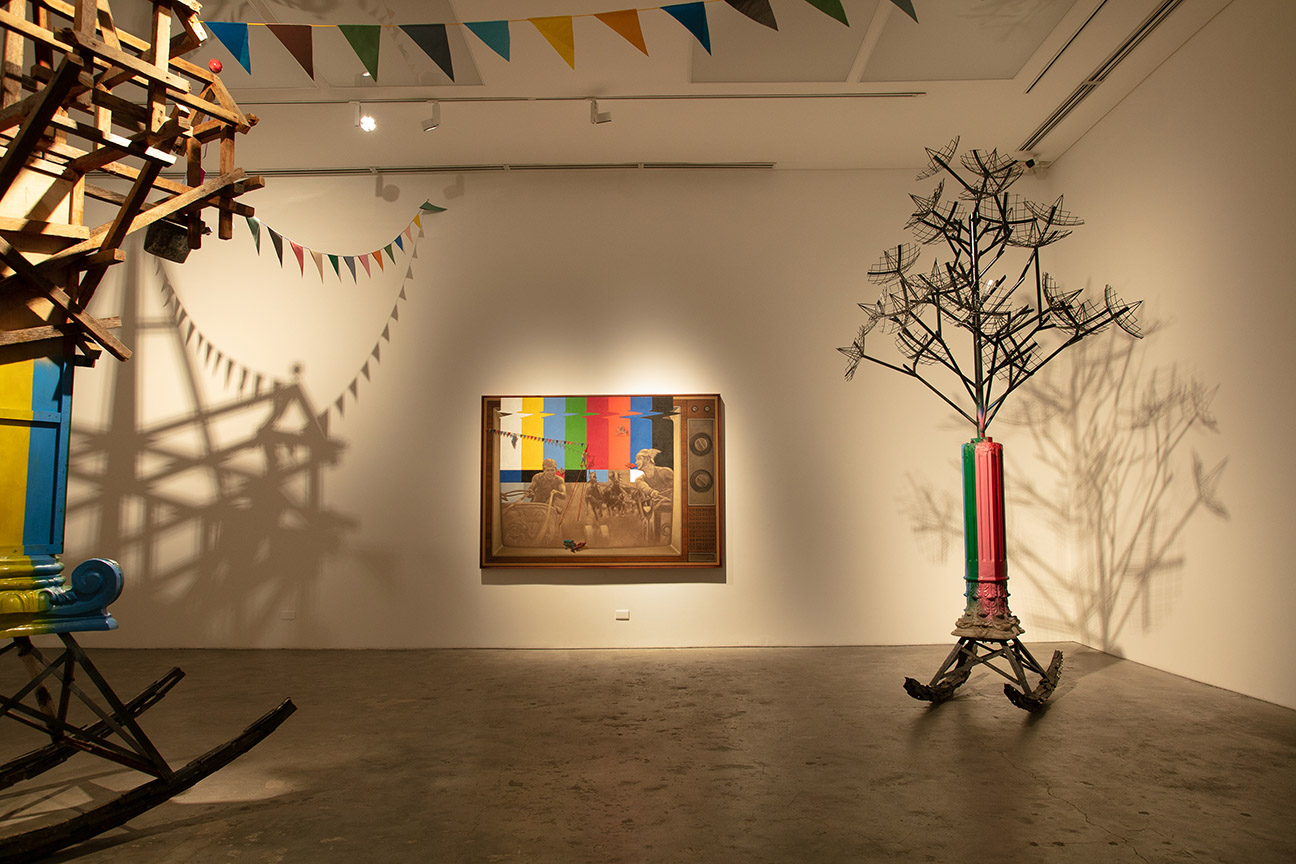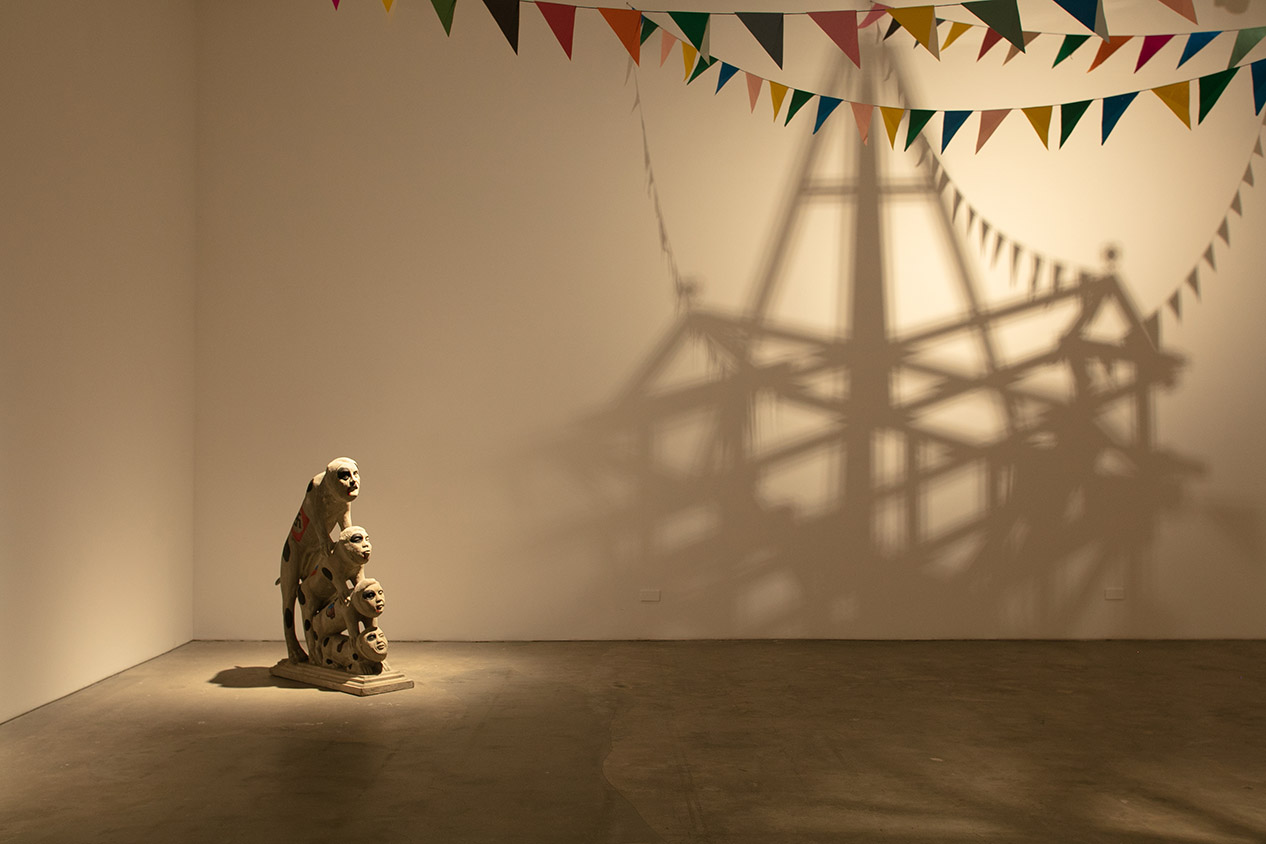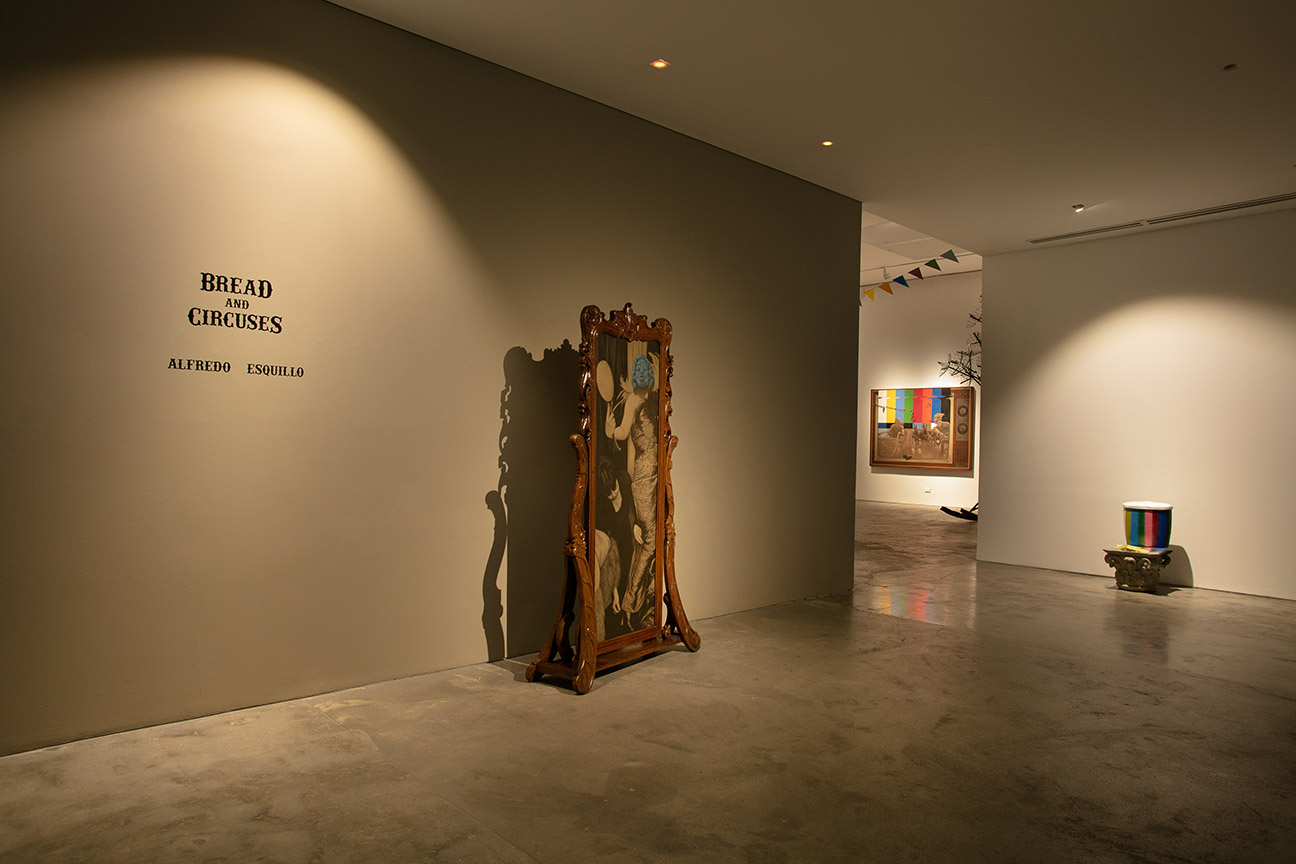History repeats itself in Alfredo Esquillo’s latest solo exhibition, Bread and Circuses, on view at Silverlens Galleries. In presenting a series of sculptures, paintings, and installations, Esquillo emphasizes the power of media and its influence, as well as its longstanding effect on society alluded by its loss.
The title of the exhibition was taken from a book by Patrick Bratlinger, Bread & Circuses: Theories of Mass Culture and Social Decay — a copy of which Esquillo has owned since his college days. ‘Bread’ meant keeping the populace fed, ‘circuses’ meaning people were kept entertained. Here, the artist emphasizes the parallelism in this theory: how contemporary Philippine society has similarities in this spectacle of mass culture and social decadence, comparable to the decline of the Roman Republic and its transition to a more dictatorial approach.
Esquillo’s critical artistic renderings, as well as his endowed political learnings, are similar to banging our heads to the walls desperately for the first time in order to make us realize our own misconceptions.
Esquillo’s distinguished career in the arts has earned him numerous residencies and awards, alongside local and international shows throughout the 25 years of his career. In his practice, one encounters works that address social, religious, and political narratives — raising issues that define Philippine history and contemporary life. The pieces presented in Bread and Circuses attribute to each context and uphold its politically charged messages. By relating the rise of the Roman Empire to the consequential downfall of modern society, the artist takes elements and interprets their connection in this collection of works.
This exhibition gathers sculptures and paintings that depict Esquillo’s expertise and mastery of multidisciplinary forms. There is variety in the mediums found in the artist’s recent offering; from working with cement, incorporating sawdust and exploring the pliancy of clay in his paintings, and continuing the conversation by calling attention to societal affairs.
Entering the gallery, one is welcomed by the stout sculpture of a toilet bowl filled to the brim with gold bars. Entitled Decline and Fall of An iTallano Empire, this piece is a resolute allusion to the myth of wealth owned by the Marcoses and how it allows people to believe in such faulty, unreasonable, somewhat illogical stories told to divert attention.
The peculiar, often occurring phenomenon ascribed to this piece is the persistence of storytelling: in repeating a false and misleading story, it eventually becomes a fact to those who fall victim to believing it. One may question the motives of why this narrative is spreading – and up to what extent are we obligated to correct this falsehood? It is in these manipulations that people refuse to admit to accepting.
'Decline and Fall of an iTallano Empire', cement, acrylic paint (2022). Courtesy of Silverlens.
Upon This Rock I Will Build My Bank is a monumental sculpture; stationed at the center of the space, fiesta banderitas hang from the top of the almost 13-feet piece. A commentary on the influence of religion, this work depicts the scaffolding of a church still under construction. Adjacent to this is Tree of Knowlege and Ignorance, in similar structure – the base of Roman Ionic and Corinthian columns atop a rocker – as depicted in the artist’s earlier works. Contrasted to the first piece, this contains satellites made of metal welded into place onsite in the gallery.
During the early ’70s, mass culture and media were heavily censored and controlled by the government, affecting news channels and keeping the general public in the dark. The repetition of the multicoloured bars in several works indicates the pattern shown once the signal is lost. Coincidentally, the sequence of repeated vertical bars is identical to the campaign colors used by the presidential and vice-presidential candidates of the recent national election. This color sequence also refers to the moment Marcos would appear on television, almost a conditioning of chilling news to come.
Technology critical to information dissent mingled with the popularity and appeal of bomba films, featuring promiscuous scenes in softcore films from the start of 1970 until 1972.
In Nutribun at Pene, Esquillo emphasizes the manipulative efforts in the dictatorship era; the concept of Nutribun (an import from USAID) ‘solved’ malnutrition through its distribution, all while human rights violations continued. It is in this series Esquillo applied the use of clay, inspired by the figures his son Yahsky created – also seen in Road Rage, depicting Roman chariot racers framed by a vintage television with subtle media elements.
Political activism and protests against the government prevailed in the 70s, and continue to this day. Esquillo’s latest exhibition comes at a timely point; the historical relevance of another national election, where the son of a dictator prevails calls attention to the importance of knowing one’s past. The significance of controlling media insinuated by suppression, manipulation, and disinformation all influencing the public sphere – a spectacle we must protect and involve ourselves in.
Through guarding history, integral information understood as fact instils critical thinking in narratives that require it. Bread and Circuses urge audiences to continue seeking the truth, even if it means learning the painful past of our Philippine history.
As we prepare ourselves for a newly elected leader, who will either be determined to get us out of the quagmire or further sink us deeper in the social quicksand, Esquillo situates the complex context we are collectively facing. He let us understand ourselves vis-à-vis the ongoing efforts to revise history that Martial Law did not happen.
Alfredo Esquillo’s solo exhibition, Bread and Circuses is on view at Silverlens until next Saturday, 18 June 2022. Experience the show in person by heading to the gallery, open from Tuesday to Saturday from 10AM to 5 PM. No appointment is needed, as walk-ins are accepted.
There will be a film viewing of Dekada ‘70 to conclude the show, happening on Friday, 17 June 2022. Visit the gallery’s website to learn more about Alfredo Esquillo and to discover his works.
Meg Genuino is a contributor to Cartellino.


